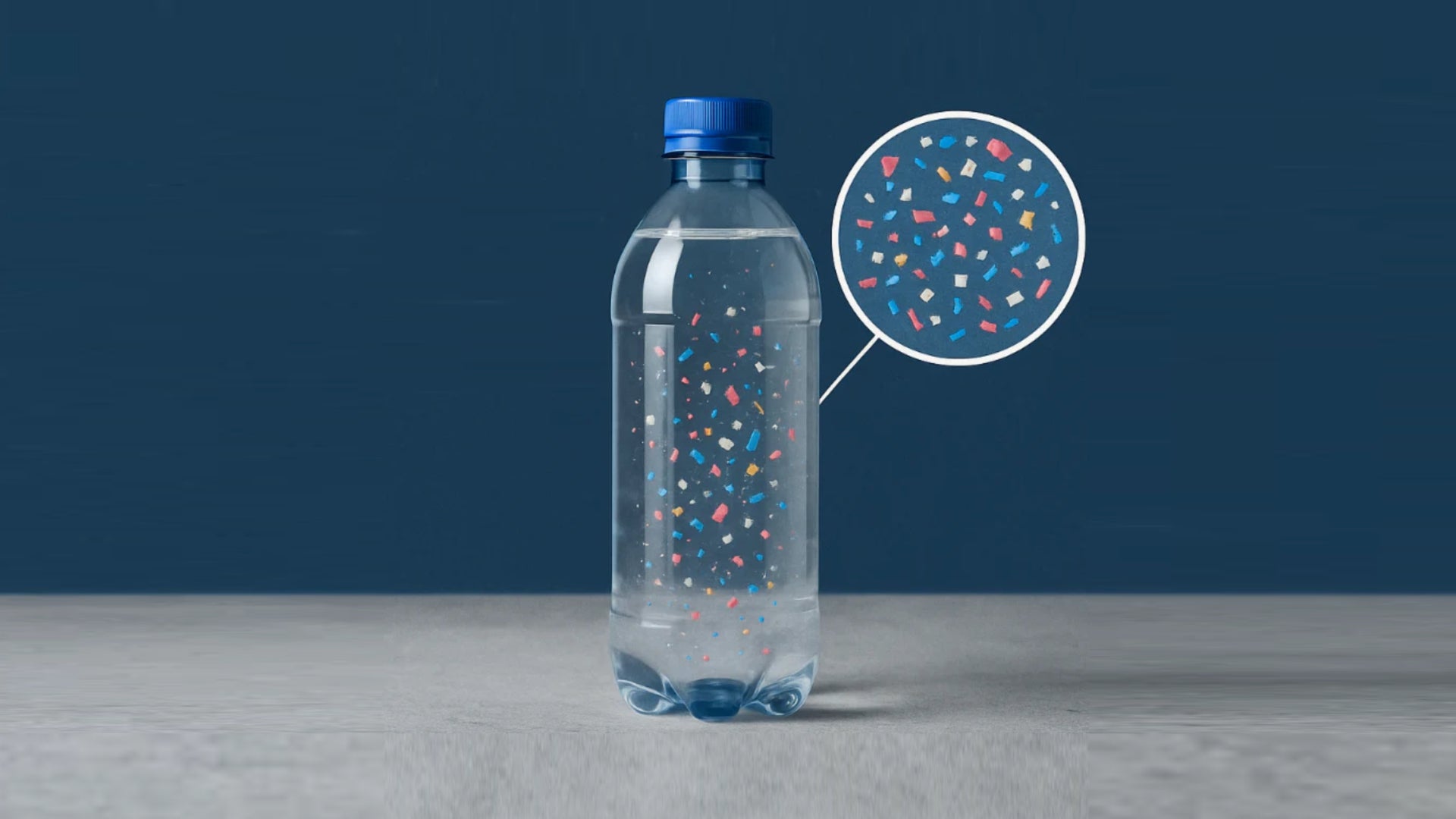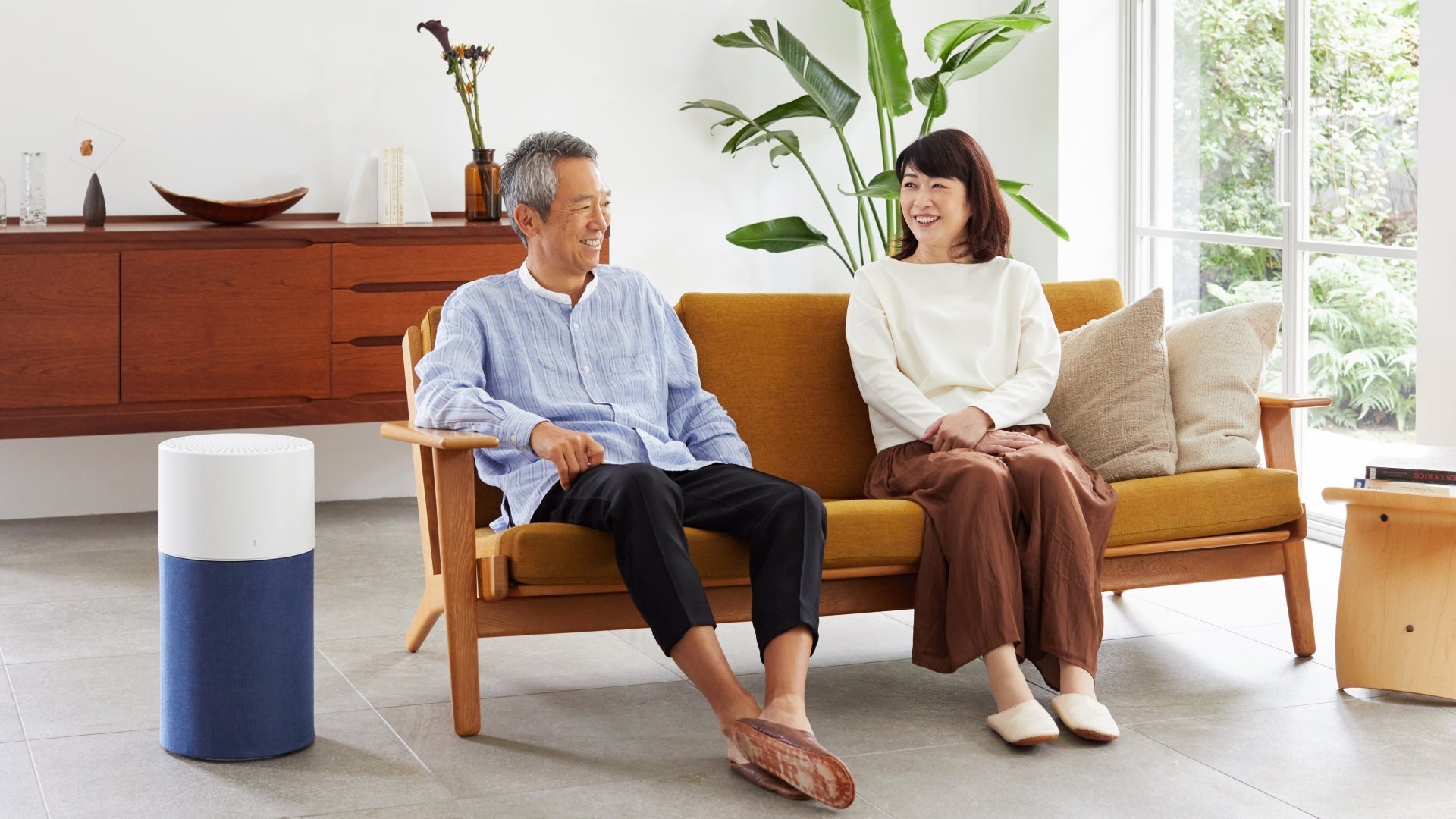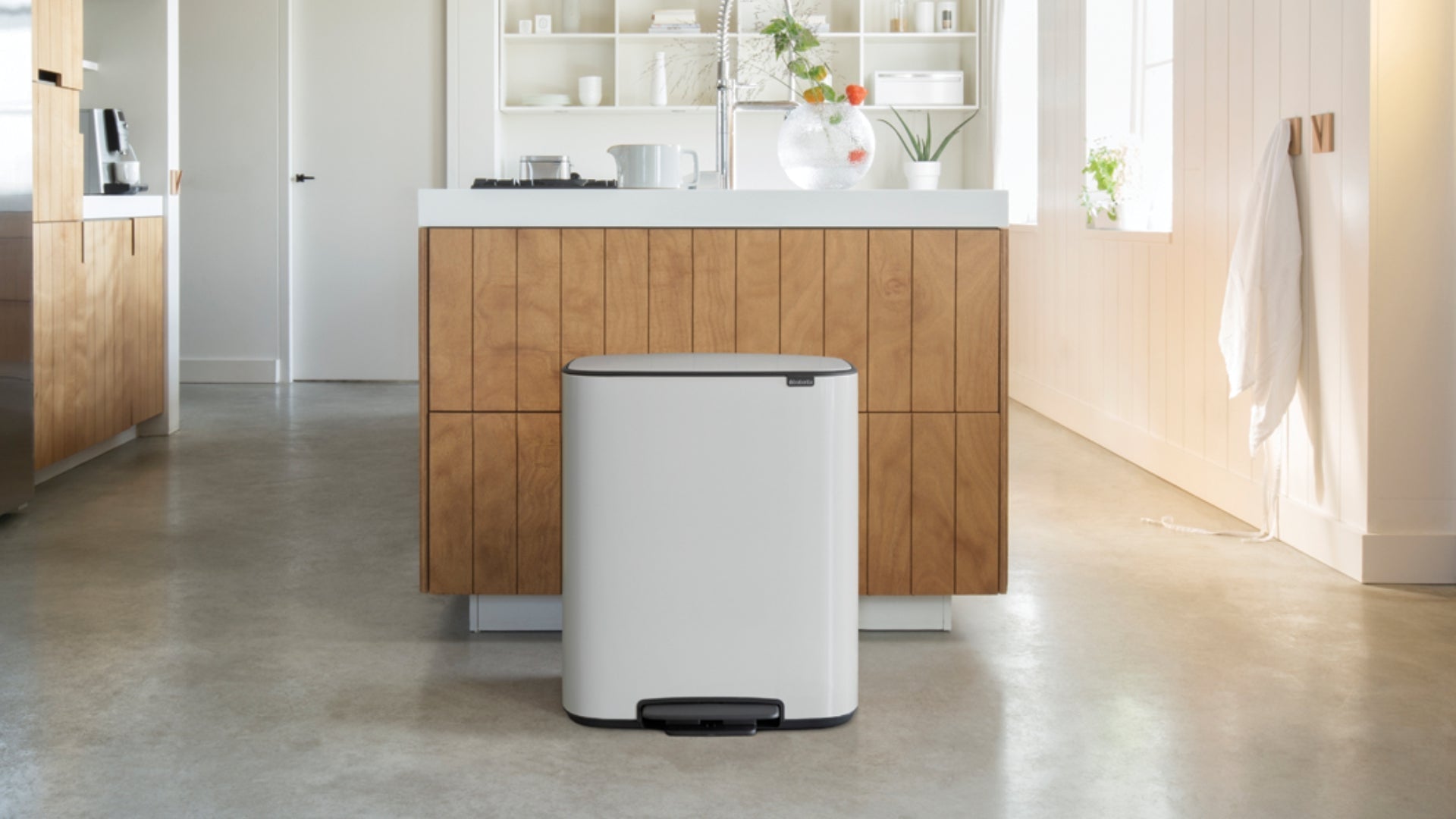- Bottled ≠ Pure → A liter of bottled water can contain ~240,000 microplastic & nanoplastic particles. Heat in Indonesia makes it worse.
- Tap isn’t safe → In Indonesia, tap water isn’t reliably potable, so bottled water feels like the only choice. But it adds invisible risks.
- Your plastic debt → Every sip adds to a lifelong “plastic debt” in your body. Over decades, this silent accumulation may impact health.
- The smarter solution → Reverse osmosis purifiers like Waterdrop filter out plastics, chemicals, and pathogens. Clean water without hidden costs.
The Purity Myth of Bottled Water
When you pick up a bottle of water, you expect purity, clean, refreshing, untouched. But science tells a different story. A recent study by Columbia and Rutgers researchers revealed that a single liter of bottled water may contain around 240,000 fragments of plastic, most of them nanoplastics so small you can’t see them with the naked eye.
These are not just marketing scare tactics. Other studies have confirmed that bottled water drinkers ingest tens of thousands more plastic particles per year than people who rely on properly filtered tap water. The shocking part is not just the quantity, but the type of particles: nanoplastics are small enough to potentially pass through cell membranes, travel through the bloodstream, and interact with vital organs.

In experimental models, these particles have been linked to inflammation, oxidative stress, and interference with kidney and hormonal function. While scientists are still uncovering the long-term health risks, one fact is becoming clear: bottled water is not the “pure” product people assume it to be.
Why “Better Off Drinking Tap Water” Doesn’t Apply in Indonesia
In countries with safe municipal supplies, experts often say: “you’re better off drinking tap water than bottled.” But locally, the situation is not so simple. Tap water here is rarely potable. Households, gyms, cafés, and even hotels rely heavily on bottled water. Not out of preference, but necessity.
The problem is that in tropical climates, where bottles are often stored and transported in hot vans or left under the sun, the plastic leaching effect worsens. Heat accelerates the release of microplastics and nanoplastics. Caps and closures can also contribute additional fragments. In short: while bottled water may reduce microbial risks, it introduces a new, invisible risk that Indonesians rarely consider.

A Fresh Way to Look at The Problem: Your “Plastic Debt”
Think of microplastics and nanoplastics not as a single sip hazard, but as a lifetime accumulation. Every time you drink from a plastic bottle, you’re adding to a silent, invisible “plastic debt” in your body. Individually, those particles may seem harmless. But after years or decades of bottled-water dependency, the cumulative exposure could matter more than we realize.
It’s not about fearmongering. It’s about recognizing that health risks are often dose-dependent. And right now, bottled water is quietly adding to a dose we don’t need.
The Smarter Choice: Reverse Osmosis Purification
If tap water isn’t reliably safe, and bottled water brings invisible plastic baggage, what’s the alternative? The answer lies in purifying water at the source - your own home or business.

High-performance Reverse Osmosis (RO) systems, like Waterdrop RO water purifiers, are designed to remove:
- Microplastics and nanoplastics that bottled water leaves behind.
- Pathogens, heavy metals, and chemicals common in untreated local water.
- Taste and odor issues, giving you water that is fresh, clean, and genuinely safe.
Unlike bottled water, RO filtration eliminates the risks from transportation, heat exposure, and plastic packaging. And unlike traditional carbon filters, RO membranes are fine enough to capture contaminants down to the nanometer scale.
For Indonesians, this isn’t just about convenience - it’s about control. With a purifier at home, you know exactly when filters are replaced, and you’re no longer at the mercy of inconsistent bottling standards.
The Bottom Line
Indonesians are already investing in wellness: padel sessions, yoga memberships, pilates studios, detox retreats, organic cafés. But while we stretch, sweat, and detox, we might be ignoring the simplest, most essential element of all: the water we drink every day.
Single-use plastic bottles promise purity, but the science is clear: they deliver an invisible dose of plastics we never asked for. Tap water may not be safe, but with the right purification system, it can be transformed into water that is.
You can’t stop every microplastic in the world. But you can stop the ones you drink.
Upgrading to a reverse osmosis system like Waterdrop means fewer bottles, fewer plastics, and a healthier future. It’s the smarter middle path between unsafe taps and plastic-laden bottles. Tap isn’t safe. Bottled isn’t pure. The step to clean, plastic-free water is yours to take!
Sources:
-
New Study: Plastic Water Bottles May Raise Cancer Risk
- Bottled Water Side Effects: Why Bottled Water Can Be Dangerous for Your Health | Latest News | Patrika English News
- Microplastics and Bottled Water: Is It Safe to Drink?
- Scientists tested 3 popular bottled water brands for nanoplastics. The results are alarming. - Upworthy
- Experts reveal the importance of knowing the side effects of drinking water from plastic bottles | Marca
-
Scientists Warn: Bottled Water May Pose Serious Long-Term Health Risks






Bagikan:
Jakarta: Air Pollution Strikes Back
Rumahmu Sudah Keren, Kenapa Tempat Sampahnya Masih Biasa Aja?